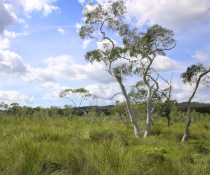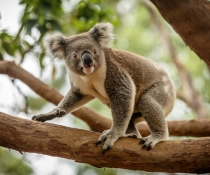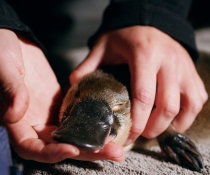The cockroach that time forgot
On Lord Howe Island a team of scientists has discovered a new and highly significant population of Lord Howe Island cockroaches. What they have learned from their DNA is potentially a game changer - not only for their conservation but for the management of the World Heritage-listed island.

Rise of a 'rock-roach'
The endangered Lord Howe Island wood-feeding cockroach is possibly the world's least likely animal to have left a team of scientists utterly awed and dumbfounded with the secrets the species is now beginning to yield.
Panesthia lata lives underground, beneath rocks and logs, feeds on forest leaf litter, only forages at night, has a home territory of less than a square metre and is closely related to a wood cockroach found on mainland Australia.
Once Lord Howe Island and its surrounding small archipelago – 600 kilometres offshore from New South Wales – was home to a vast population of cockroaches. No one knows exactly how the species' ancestor made its way to Lord Howe. One scenario is that its ancestors were swept out to sea from the mainland on rafts of vegetation and ended up washing onto the shores of Lord Howe Island, millions of years ago.
Since their arrival, the cockroaches have become fundamental to the ecology of Lord Howe Island. Their burrows aerate the soil, and they drag leaves underground to eat, which releases nutrients into the soil, says senior scientist with the Department of Planning and Environment and long-term Lord Howe Island researcher, Nicholas Carlile.
Soil-burrowing survivors
In 1918, the inadvertent escape of rats onto Lord Howe Island led to a rapid collapse of a suite of unique fauna and the loss of many invertebrate species, said Carlile. Although the cockroaches survived on nearby offshore islands such as Ball's Pyramid, Blackburn and Roach Islands, it was thought that the species had disappeared from Lord Howe Island.
"The cockroaches are an important ecosystem driver that has been missing from Lord Howe Island for over 80 years," said Carlile. "The cockroaches are an ecosystem bulldozer, providing the earthworks that support vibrant ecosystems."
In 2019, after decades of planning, an intense, massive rodent eradication program was conducted on Lord Howe Island. Although a small number of surviving rats were found last year, they were quickly removed.
In the wake of the rodent eradication program, researchers were beginning to consider the possibility of re-introducing cockroaches from the islands back to Lord Howe as part of the effort to revitalise the ecosystem.
An incredible discovery
In July this year, while assisting a young honours researcher from the University of Sydney, Maxim Adams, a truly stunning discovery was made.
Bad weather prevented Adams from accessing Roach Island, so Carlile suggested a search on Lord Howe Island despite believing the creatures would not be found.
Carlile and Adams headed to North Bay on Lord Howe Island and started their survey under a huge banyan tree. As soon as they rolled over the first rock, they saw a Lord Howe Island cockroach quickly burrowing to escape.
Further surveying revealed a thriving population. After gaining permission from authorities, 8 individuals were collected for further study by Adams and his supervisor, Professor of Evolutionary Biology at the School of Life and Environmental Sciences at the University of Sydney, Nathan Lo.

Evolutionary history revealed
It was then that DNA analysis of the various populations began, and the story took a curious turn. The researchers guessed that the animals would be very closely related genetically. However, the North Bay individuals showed a number of differences from the individuals from Blackburn Island, indicating separation at least tens of thousands of years ago. Further work involving additional individuals, including historical museum specimens, is required to confirm this finding.
There are also some preliminary results suggesting that males of the population at North Bay may be as much as 20% smaller than males in the other population.
The team is now investigating whether the different populations of Lord Howe Island cockroaches may, in fact, be different species.
"Somehow, these little creatures at North Bay appear to have hung on in this one spot," said Professor Lo.
"Hopefully, that population can re-establish itself in other parts of the island."
The research project is led by the University of Sydney in partnership with the Department of Planning and Environment, Lord Howe Island Museum and is funded by the Australia and Pacific Science Foundation and the Australian Research Council.
Find out more
Find out more about the Lord Howe Island wood-feeding cockroach in its threatened species profile.












